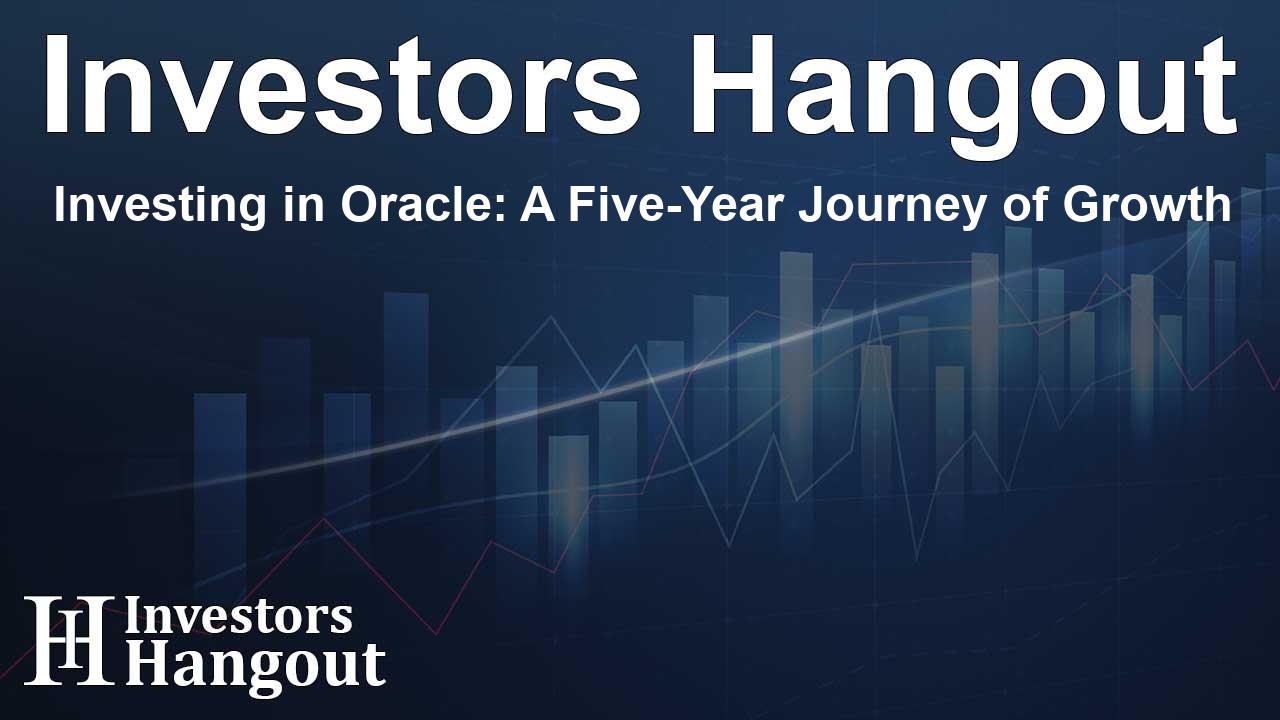Investing in Oracle: A Five-Year Journey of Growth
Oracle Corporation (NYSE: ORCL) has shown impressive performance in the stock market over the past five years. Investors who placed their faith in Oracle have enjoyed substantial returns, outpacing the market by an impressive 11.84% on an annualized basis. This translates into an average annual return of 25.79%, showcasing Oracle's ability to deliver value consistently.
Turning Investment into Profit
If an investor had taken the plunge and invested $1000 in Oracle five years ago, today that investment would be worth approximately $3,109.96, based on a share price of $168.00 at this writing. This significant growth highlights how powerful investing in high-performing stocks can be, particularly when reinvested earnings are factored in.
The Power of Compound Returns
A crucial takeaway from Oracle's journey is the extraordinary impact of compounded returns over time. Compounding allows investors to earn returns on their initial investment as well as on the accumulated returns from previous periods. Over five years, this compounding effect can dramatically boost an investment portfolio, transforming seemingly modest investments into substantial assets.
Oracle's Market Capitalization
As of now, Oracle boasts a robust market capitalization of around $465.52 billion. This significant size not only indicates Oracle's market presence but also reflects investor confidence and company stability. Such factors typically contribute to sustained growth, making Oracle a noteworthy player in the technology sector.
Understanding Stock Performance
Investors must consider various factors influencing stock performance, including market trends, financial health, and strategic decisions by the company. Oracle has continually adapted to changing technology landscapes, embracing innovations and maintaining competitiveness, which has positively impacted shareholder returns over time.
Final Thoughts on Investment Strategies
In summary, Oracle’s stock performance over the past five years serves as a valuable case study for investors. It illustrates the potential benefits of long-term investment strategies and the significance of compounding returns. As market conditions continue to evolve, maintaining an investment in companies like Oracle could serve as a cornerstone for building wealth.
Frequently Asked Questions
What was the average annual return for Oracle over the past five years?
Oracle has delivered an average annual return of 25.79% over the past five years.
How much would a $1000 investment in Oracle be worth today?
A $1000 investment in Oracle five years ago would be worth approximately $3,109.96 today.
What is Oracle's current market capitalization?
Oracle's market capitalization is around $465.52 billion currently.
Why is compounding important in investing?
Compounding allows investors to earn returns on both their principal investment and previously accumulated returns, significantly boosting long-term gains.
How has Oracle adapted to market changes?
Oracle has embraced technological innovations and made strategic decisions that have helped it maintain competitiveness and drive growth.
About Investors Hangout
Investors Hangout is a leading online stock forum for financial discussion and learning, offering a wide range of free tools and resources. It draws in traders of all levels, who exchange market knowledge, investigate trading tactics, and keep an eye on industry developments in real time. Featuring financial articles, stock message boards, quotes, charts, company profiles, and live news updates. Through cooperative learning and a wealth of informational resources, it helps users from novices creating their first portfolios to experts honing their techniques. Join Investors Hangout today: https://investorshangout.com/
Disclaimer: The content of this article is solely for general informational purposes only; it does not represent legal, financial, or investment advice. Investors Hangout does not offer financial advice; the author is not a licensed financial advisor. Consult a qualified advisor before making any financial or investment decisions based on this article. The author's interpretation of publicly available data shapes the opinions presented here; as a result, they should not be taken as advice to purchase, sell, or hold any securities mentioned or any other investments. The author does not guarantee the accuracy, completeness, or timeliness of any material, providing it "as is." Information and market conditions may change; past performance is not indicative of future outcomes. If any of the material offered here is inaccurate, please contact us for corrections.
